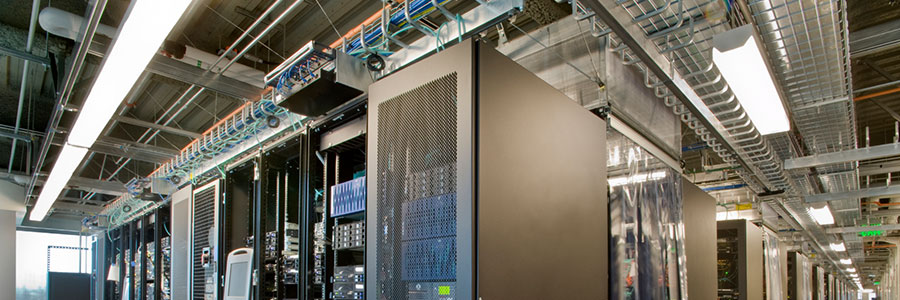Hurricanes are powerful and destructive natural disasters that can cause extensive damage, including to the critical IT infrastructure that businesses like yours rely on. Ignoring the risks to your business’s technology can severely impact your ability to function and delay the recovery process.
Don’t wait until hurricane season — now is the time to take action and protect your vital IT assets. Take these steps to minimize downtime, prevent data loss, and ensure business continuity even when disaster strikes.
Back up your data
Before anything else, perform a full backup of all your critical data. This includes data in servers, workstations, and any other devices storing important information. Store backups in a secure, off-site location — preferably in the cloud or a geographically distant data center — so even if your office is damaged, your data remains safe and accessible.
Don’t forget to regularly test your backup and restore procedures to confirm they function as expected and that data can be recovered quickly and completely in an emergency. Regular testing also helps uncover any gaps or issues in your backup strategy and infrastructure before a real crisis occurs.
Keep IT equipment off the floor
Flooding is a common risk during hurricanes. To mitigate potential water damage from even minor flooding, elevate all IT equipment off the floor, including servers, computers, monitors, and networking devices. Use sturdy platforms, shelves, or tables to raise equipment.
For added safety, avoid placing power strips or extension cords on the floor where they could be exposed to water. Taking these simple precautions can make a major difference in your recovery efforts following a flood.
Protect computers and other devices near windows
Windows are one of the most vulnerable points during a storm, making nearby equipment especially prone to damage from strong winds, flying debris, and water intrusion. Before a hurricane hits, cover all hardware devices located near windows with heavy-duty trash bags or waterproof tarps. Secure the coverings tightly to prevent them from being blown away or allowing water to seep in.
Consider moving equipment away from windows altogether, or if this isn’t possible, use furniture, filing cabinets, or other barriers as additional protection.
Secure your server room
If your business has a dedicated server room, take extra precautions to protect it. Water or physical damage to the equipment within this room can be irreversible, leading to permanent data loss and significant operational setbacks. So, it’s critical to ensure the room is watertight and that the door is sealed. You can even use sandbags to prevent water from entering.
If possible, relocate servers to a more secure location outside the immediate impact zone.
Create an inventory of your IT assets
A comprehensive IT asset inventory goes beyond just listing hardware. It should also include software licenses, cloud service subscriptions, and network configurations. Having a detailed record of all your devices provides a holistic view of your IT ecosystem, and it will be crucial for restoring not just the physical equipment but also the digital services your business depends on.
Think of it as a blueprint for rebuilding your technological capabilities, giving you a clear and organized guide that accelerates the recovery process and reduces downtime.
Follow proper shutdown procedures
If your business is in an area expected to be severely impacted, power down and disconnect all IT equipment before the storm arrives. Notify your IT support team to properly shut down servers and specialized systems, following manufacturer-recommended procedures to avoid data corruption or hardware damage.
Once they’re powered down, unplug all devices from both network connections and electrical outlets to protect against power surges and reduce the risk of electrical shock in the event of flooding.
Anticipate power and communication outages
Hurricanes often knock out power across large regions. To mitigate the impact of power disruptions on critical IT equipment, invest in uninterruptible power supplies (UPS) for servers, networking devices, and key workstations. Make it a routine to test these UPS units, confirming they have sufficient capacity for safe equipment shutdown or to keep things running until backup power kicks in.
If your business relies on a VoIP system, you’ll likely face a double whammy: no power for your devices and no internet for your phone service. The inability to communicate can hinder everything from assessing damages to coordinating necessary repairs and support.
So, it’s best to plan for potential internet and phone disruptions. Research and identify alternative communication methods, such as satellite internet, cellular hotspots from different providers, or even two-way radios. Make sure your IT team and other key personnel have access to these alternative channels.
Develop a recovery plan
Mitigating the risks posed by hurricanes requires a well-defined disaster recovery (DR) plan. A DR plan serves as a strategic framework for responding to and recovering from potential technological damage. Crafting this plan involves assessing potential threats, implementing preventative measures, and establishing clear steps for data retrieval and system repair. Consistent testing of your DR plan helps identify vulnerabilities and refine your strategy.
A proactive approach to IT recovery significantly reduces the long-term impact of a hurricane on your business. Learn more about developing a robust IT recovery plan and protecting your critical data — contact TEKZYS today.
